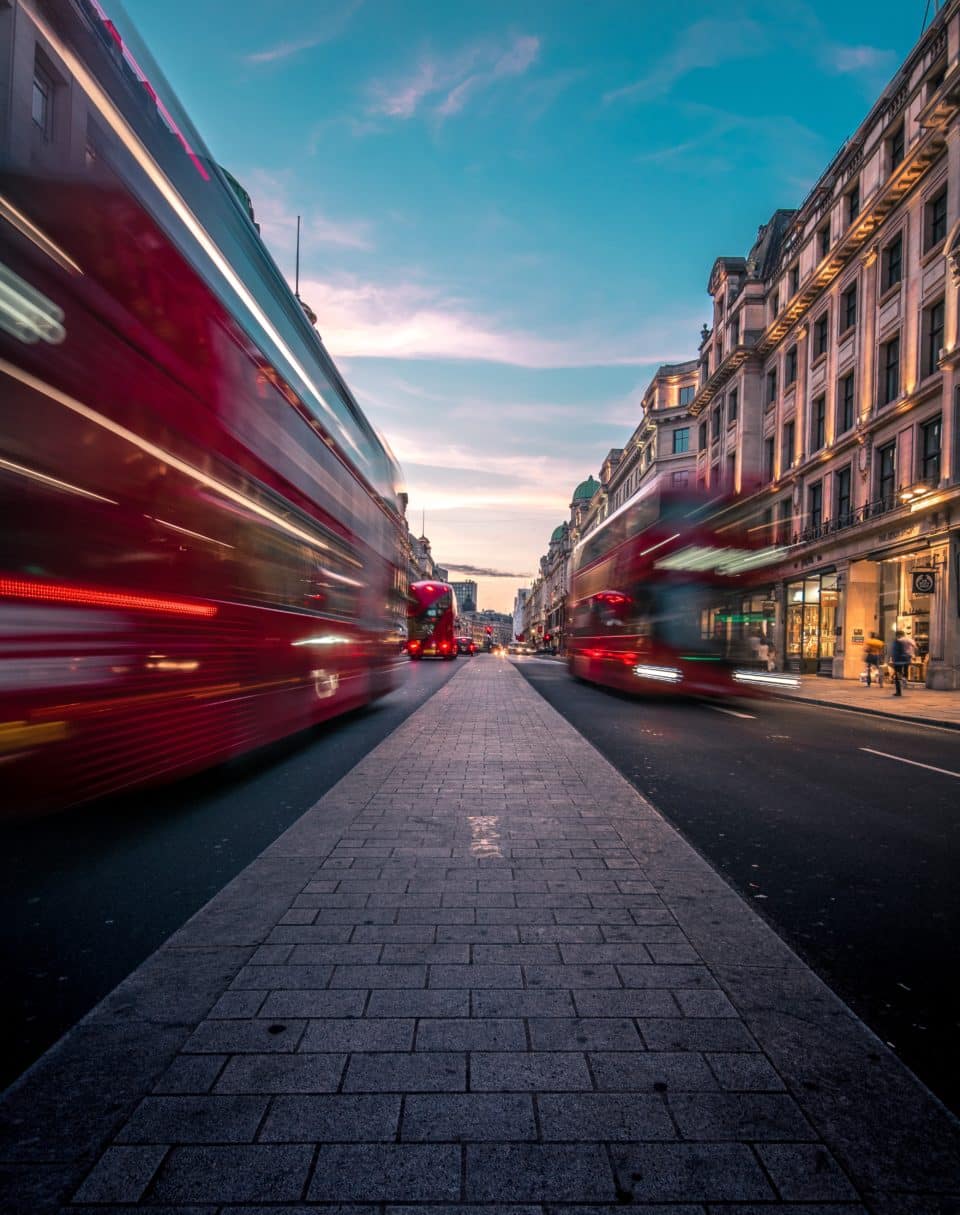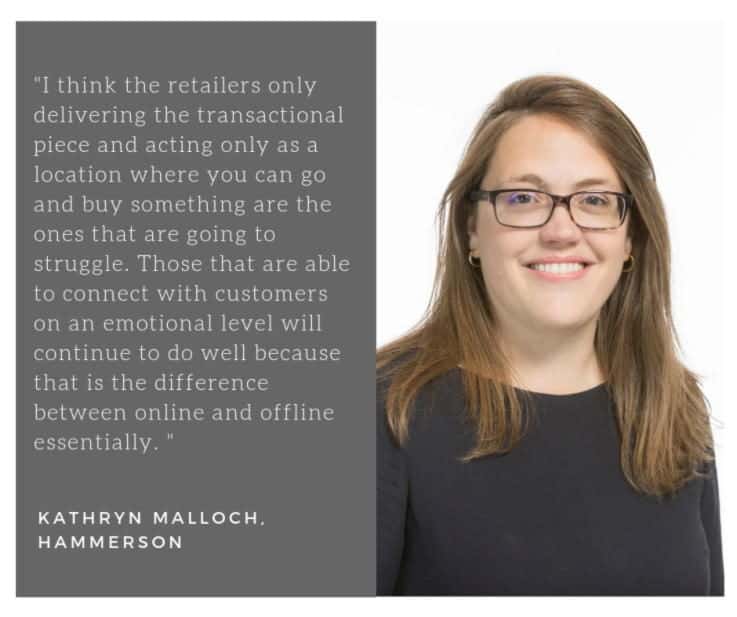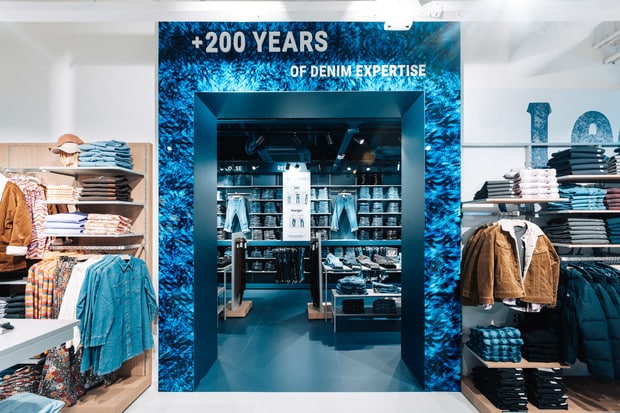How Hammerson is setting itself up for success through tech

Hammerson is all about creating destinations – places for people to shop and eat and meet and experience. Its shopping centres and retail parks are among the best in Europe, not least because of the company’s refreshing approach to innovation and technology as problem solvers and experience facilitators.
Kathyrn Malloch, Head of Customer Experience, sheds light on how shopping centres are evolving, why tech is helping enable the experiences shoppers want and why innovation doesn’t have to cost the earth:
Kathyrn Malloch, Head of Customer Experience, Hammerson
Can you describe Hammerson and your role in a nutshell?
We are owners, operators and developers of retail and leisure property across Europe including the UK, France and Ireland. My role is focused on creating destinations and looking at how we use digital and technology within our centres to engage consumers and make the shopping experience as seamless as possible.
I also look at the centre environment and how we drive dwell time through things like lighting, sound and seating, and how we drive value through the services that we offer such as hands-free shopping and click-and-collect.
How are customer expectations changing?
Consumer habits are changing massively. More and more people are coming to our centres for a day out, spending a substantial amount of time. It’s not just about a pure retail experience. It’s about leisure, it’s about entertainment and it’s about food and drink.
We are investing heavily in 2019 off the back of some very successful work we’ve been doing at one of our centres, Westquay in Southampton, to look at how we turn our centres into entertainment venues through a really engaging and exciting events programme.
At the same time, if we’ve got people coming to centres for a day out and spending more time, we also want to look at how we make that journey more supported and frictionless. If you’re enjoying all of these things you don’t want to be carrying bags with you or having to wait ages to pay. Hands-free shopping is something we have in many of our centres now. We’re also exploring things like frictionless payments within our carparks.
We are always thinking about that end-to-end journey and investing heavily in customer insights. We collaborate with really interesting partners who work in that space to try and get under the skin of what our customers think and what’s going to benefit them. That’s driven a lot of the projects that you see being trialled or rolled out across our centres. It’s about making sure we take a customer first approach and not just doing something for the sake of it.
Can you talk us through your latest developments?
We want to excite our shoppers and inspire them as well, so we’re looking at developments that help them discover. Style Seeker is an AI visual search technology tool that allows customers to use a picture to find similar products from retailers within that centre. It’s about helping people to discover products easily.
Through customer insight we discovered that shoppers typically visit the same stores and take the same journey through the centre. Style Seeker is about how we get them off that path and allow them to explore brands that weren’t on their radar. I think that’s a really nice example of technology doing something a bit different by aiding discovery and inspiration in the physical environment.
The great thing about Style Seeker is that it’s so intuitive, allowing you to search by a particular pattern or colour. For example, if you like a red check skirt but wanted to see that pattern and colour in a pair of trousers you can do that.
Some of that inspiration was taken from the fact that you can’t do that so easily online, because you have to think about how you would type that in to the search bar. When we were doing the testing, it was really interesting to see the difference in how retailers categorised their products. You might describe something as burgundy but someone else might describe it as red.
Language is complex but using visual search is far easier and a much more intuitive way to browse and explore products. Being able to aggregate all of that across many of the retailers in our centres makes it so easy for a customer to see all the red dresses rather than having to visit each of those individual retailers. I think that’s where landlords have a real part to play in engaging with customers and providing some of that help and advice.
How else are you using technology to improve the experience?
There are different types of customers. There will be someone with a precise mission to go to a specific retailer or get a specific product and they just want to get there as quickly as possible and get out. Then you have people that are just browsing and are after inspiration or are there for other reasons like meeting someone for lunch.
Having a range of services and tools that help facilitate those different types of shopper journey is really important. One of the technologies we developed recently is a chatbot which sits on our website, mobile web and Facebook Messenger. That’s worked really well for those people that have a precise mission because it’s about help and advice. It’s brilliant as an instant response, 24-hours a day, for all those basic customer service queries.
We are currently rolling it out across the UK and are already live in four of our UK centres and one of our centres in France. It gives us really useful consumer insights and we have had over 42,000 people use the bot already. Some ask multiple questions, so that’s a huge amount of data. This includes the type of retailer they’re asking for, and sometimes those retailers aren’t in the centre, so we are able to feed that through to our leasing team to inform that process.
We also get some great insight and feedback into customer service and the facilities that we have in our centres. As a result, it’s allowed us to start adding things that we’ve seen people ask for a lot. It’s helping give insight that hopefully will then drive forward the customer experience that we’re able to provide.
Could you use this to discern trends in the future?
There’s a real opportunity there once we’ve got data built up over a period. I think the challenge then will be for retailers and how quickly they’re able to respond to that insight.
I think that’s a challenge for retailers generally. Traditionally, particularly within fashion, they’ve always worked to quite fixed cycles. What we’re seeing now in fashion is change in terms of consumer habits and buying habits. There’s a need to have a really agile approach to merchandising and stocking product and being able to turn that round in a much shorter timeframe. I think that’s why you’ve got brands like & Other Stories and Zara doing really well because I think they respond very well to those rapidly changing customer demands.
What I would love is to start feeding into that process and informing it further. We actually get some very interesting insights from these tools, so I absolutely think there is an opportunity.

How else are you adapting?
The landscape is changing so rapidly, so having flexibility and being able to accept that your model will need to change is really important. We’ve gone through a huge amount of change looking at how we transform our processes and structures. I think there’s a lot to be learnt from retail in terms of being agile, because property arguably is slower by nature.
At the start of last year we partnered with Concrete, which is a proptech company, to drive the pipeline of innovation within our business. I think proptech is incredibly exciting; it’s one of the most underinvested sectors but there’s some rapid change happening in this space. We work very closely with Concrete looking at a number of start-ups they’re working with. We’ve also been working with them to drive awareness of innovation within our business and gaining insight into what the key trends within proptech are.
How is the role of the store changing?
We are social creatures at the end of the day and shopping is a social experience. I think the challenge is adapting to the evolution of micro-trends relating to exactly what people want to do in those spaces.
Those very functional transactional journeys are the things that are reducing, but people will absolutely keep going for emotional reasons, whether that’s connecting with people socially or having a unique experience.
I think the retailers only delivering the transactional piece and acting only as a location where you can go and buy something are the ones that are going to struggle. Those that are able to connect with customers on an emotional level will continue to do well because that is the difference between online and offline essentially. It’s very difficult, even with technology, for online to compete with that.
Having a connection with the customer and being able to explain to them what your brand is about is really important. When we’ve had pure play retailers do pop-ups in our centres we know there is a halo impact on their online sales. It’s not just being exposed to products or services. Some of it is just brand awareness and putting that brand at the forefront of customers’ minds.
As long as you’ve got adaptability, I think the physical locations will survive. What’s in them and what people are doing when they visit is the bit that’s going to change. It’s about setting your business up so that you can be agile and respond to that.
How does location impact the centre mix?
We recognise that having a local approach to what we do is important. We need to think about the customers we’re targeting and ensure that we’ve got the right mix of services, of retail and leisure and food and beverage tailored to that catchment. It has to be targeted, even down to events and entertainment. We’ve got certain centres where there’s a massive student community and we run student nights with a big lock-in and discounts and exciting DJs; but that wouldn’t work in every location.
The other benefit to us working in that way is we can partner with various relevant local businesses. We’ve managed to get some really interesting partnerships on events, such as working with local theatres and arts & dance academies.
What’s different about your approach compared to other centres?
I think we’ve got a fairly unique approach. We now have a budget for research and development within our business. That is allowing us, in a really low-cost and agile way, to test, learn and understand whether there’s a use-case for technology.
We create a minimal viable product and then test that with real customers. We will then develop a prototype or a full pilot that we can test with a bigger group before rolling it out. I think that’s a very new approach in property. What it does allow us to do is get real traction and test some new, innovative, cutting-edge stuff.
We recently tested some voice recognition technology which was a first for our sector. What it demonstrated is that the technology still has got some way to go before it can be used in a centre environment. We learnt that really quickly but got some really amazing customer feedback and now we’re able to move on and trial the next iteration.
You can work out very quickly if a piece of tech really solves a problem and helps a customer whilst not overinvesting to get there. This can be as simple as taking a voice device into a centre and testing it with real customers who really engage.
One of the things we’ve found is customers love to be involved with that process. I think there’s fear that you can only take a finished product to your customer when actually they love to test new technology, they like to give you opinions and they like to be involved. I think too many companies, whether that’s retailers or property companies, are scared about that and are not getting the benefit of that test-and-learn approach. We are setting ourselves up to succeed in a world where technology is moving fast; by making sure we are moving fast too.
Inspired to look at tech in a new way? Here’s 50 of the best retail tech start-ups out there. See the latest trends for yourself by joining us on a London retail trend tour..



